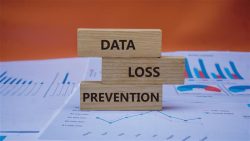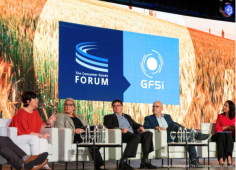Animal Medicines: Mitigating the Risk to Consumers
By Takele Beyene Tufa
In the agricultural sectors of countries around the world, veterinary medical products and other chemicals are commonly used to meet the challenge of providing adequate amounts of food for a growing world population. For instance, drugs are used to improve the rate of weight gain, to improve feed efficiency, or to prevent and treat diseases in food-producing animals. Chemicals are also used for biosecurity purposes. However, the benefit of improved productivity and biosecurity from the use of veterinary medicines and chemicals in food-producing animals, is not obtained without risk: residues of these substances remain in the tissues of treated animals at the time of slaughter and may exist in animal-derived products. This poses a health hazard to the consumer.
Drugs and chemical contaminants
Antimicrobials (antibiotics: chloramphenicol, penicillins, cephalosporins, other beta-lactams, tetracyclines, sulfonamides, quinolones, aminoglycosides and macrolides, anticoccidial agents: amprolium and monensin), anthelmintics (benzimidazole and their metabolites) and hormonal growth promoters are the main veterinary medicinal products that potentially contaminate foods of animal origin.
Alternatives to chemical and medicinal residues are out there – it’s just a matter of finding what works and sticking with it. .
Antiseptics, disinfectants, pesticides and rodenticides are among the chemicals that most commonly contaminate animal products (Beyene et al., 2016). And Improper drug usage and failure to maintain recommended drug withdrawal periods are the most common reasons for the occurrence of residues in food-animal products.
Public and Economic Significance
While it’s tempting to assume there is minimal risk to public health, chemical residue can lead to some serious issues, such as the development of antimicrobial resistance, hypersensitivity reactions, carcinogenicity, and disruption of intestinal normal flora, to name just a few. What’s more, animal food products containing greater than the minimum drug/chemical residual limit are prone to food recalls which can cost millions of dollars, as well as countless lost sales and incalculable brand damage.
In developed countries the drug residual limit is regulated by government agencies, such as the Food and Drug Administration (FDA) in the USA. The Center for Veterinary Medicine’s Division of Compliance is responsible for reviewing violative residues reported to the Agency by the USDA’s Food Safety and Inspection Service.
There are a number of things farmers can do to mitigate the situation.
Use of effective micro-organisms (EM): EMs have successfully replaced antimicrobials in organic farming as well as in poultry production to prevent disease occurrence and control the growth of pathogenic micro-organisms.
Alternative honey therapy for mastitis udders: Mastitis is one of the most common diseases seen in dairy animals. A meta-analysis on randomized control trials using honey in treating wounds has shown slightly superior effects compared with conventional acute wound therapy.
Good herd health management: All food animals should be kept in a clean and healthy environment whenever possible. Drug residues are best avoided by implementing management practice (good nutrition to meet growth, maintenance and lactation needs) and a herd health program that keep animals healthy and producing efficiently.
Use of approved drugs: Dairy and beef producers should not use or store unapproved drugs, special mixes, or products with inadequate labels. The herd veterinarian should be certain that extra-label drug use (ELU) involves only approved products.
Establishment of strong veterinarian-client-patient relationships: The use of prescription drug and ELU necessitate a close veterinary-client-patient relationship to ensure health management of the herd.
Proper drug administration and identification of treated animals: Before administering or dispensing drugs it’s important to know which drugs are approved for all classes of cattle on the farm; it’s also important to become familiar with approved dosage, route of administration, and withholding time.
Proper maintenance of treatment records and identification of treated animals: Smart herd handlers record all health-related events and medication administration for each animal in a permanent health record book, including administration of medication.
Maintaining proper drug residue testing capabilities on and off the farm: This control point addresses the conditions under which residue testing should be considered; the proper selection and interpretation of tests; and the inherent limitation and potential misuse of residue testing.
Education/Awareness: Creating awareness of proper drug use, and ways to minimize chemical residue is an important aspect of quality control with implications for a producer’s marketing.
Cooking and freezing processes: The effects of various cooking and freezing processes on contaminants in foods of animal origin have been evaluated and the results may vary depending on the quality of the animal products, the sample site on the same animal, the kind and duration of the applied processes. For instance, cooking can reduce tetracycline residues by 35–94% in muscle (cattle and sheep) and cattle liver. Similarly, residues of penicillin (penicillin G-benzylpenicillin and cloxacillin) in milk have been reported to be decreased by the boiling and yogurt production (fermentation). On the other hand, benzylpenicillin is more stable (not disintegrated) in milk produced with this technique. Residues of quinolones (oxalinic acid, flumequine, enrofloxacin and ciprofloxacin) in fish can be removed by discarding the meat broth containing the residues, which are transferred into boiling water through boiling. Cooking, however, cannot reduce the residues.
Alternatives to chemical and medicinal residues are out there – it’s just a matter of finding what works and sticking with it.
About the Author
Takele Beyene Tufa is an Assistant Professor at Addis Ababa University College of Veterinary Medicine and Agriculture, Department of Biomedical Sciences in Ethiopia.

-
 FeaturedRisk management
The Cost of a Breach: What a Cyberattack Could Mean for Food Safety Recalls
FeaturedRisk management
The Cost of a Breach: What a Cyberattack Could Mean for Food Safety Recalls
-
 FeaturedRisk management
Securing the Food Chain: How ISO/IEC 27001 Strengthens Cybersecurity
FeaturedRisk management
Securing the Food Chain: How ISO/IEC 27001 Strengthens Cybersecurity
-
 FeaturedRisk management
Revolutionizing Food Safety Training: Breaking Out of the “Check-the-Box” Mentality
FeaturedRisk management
Revolutionizing Food Safety Training: Breaking Out of the “Check-the-Box” Mentality
-
 GFSI Standards
GFSI 2025: Building Trust, Tech-Forward Solutions, and Global Unity in Food Safety
GFSI Standards
GFSI 2025: Building Trust, Tech-Forward Solutions, and Global Unity in Food Safety
-
 FeaturedFood Safety
Integrated Pest Management: Strategies to Protect Your Brand’s Reputation
FeaturedFood Safety
Integrated Pest Management: Strategies to Protect Your Brand’s Reputation
-
 FeaturedFood Safety Culture & Training
No Open Door Policy: Challenges That Impact Pest Control in Food Processing Plants
FeaturedFood Safety Culture & Training
No Open Door Policy: Challenges That Impact Pest Control in Food Processing Plants




